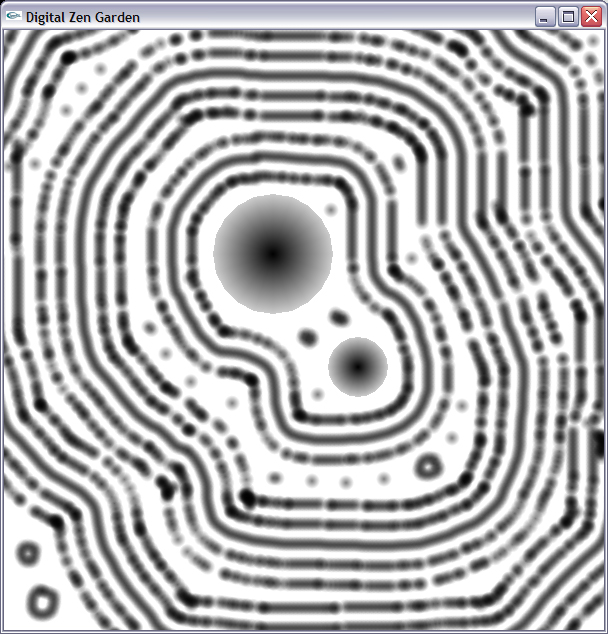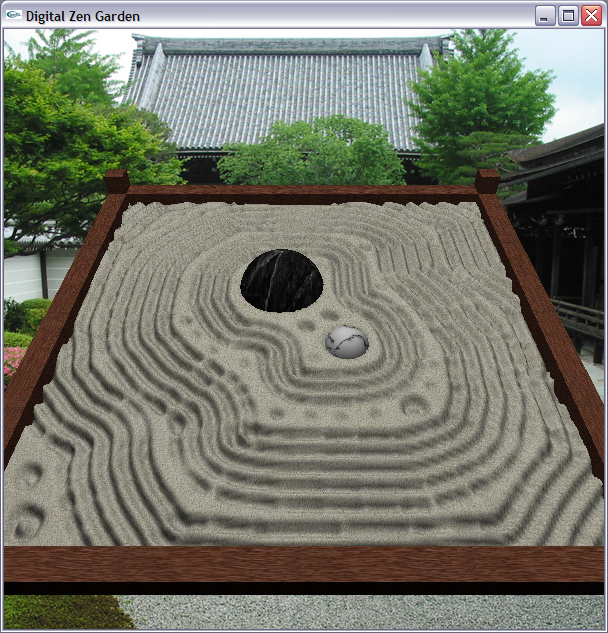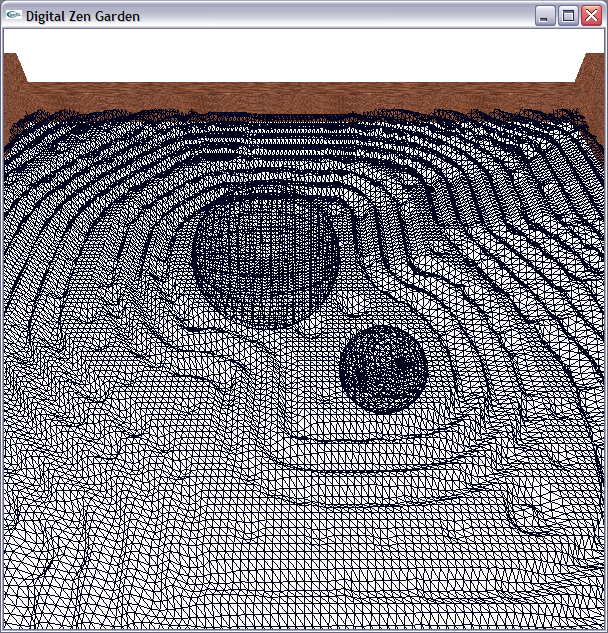|
Cal Poly CSC 471 Spring 2007 Final Project Jennifer Pawlik Last updated: Mar 16, 2007 Questions? Comments? Email: kenning.raven AT gmail DOT com
A zen garden (also called zen niwa, karesansui, or Japanese rock garden) consists of a shallow box enclosed on all sides, containing rocks and (generally pale-colored) sand. Plants and water are sometimes included by gardeners, but for the most part are a deviation from tradition. This program consists of two distinct parts: drawing and display. When the user starts the program, a screen with a white field (representing the sandbox) appears. Two rocks (textured spheres) are available and the user places them with a click of the mouse on a spot in the sandbox. Finally, a rake mode is available, allowing the user to rake patterns in the sand with a one-, three-, or five-tine rake by clicking and dragging the mouse. When the program starts, it creates a white "sandbox" window and a command line window. The use accesses the menu by right-clicking anywhere on the sandbox. The program recognizes the following keyboard and menu options.
When the user right-clicks to select the menu in draw mode, he or she must choose an option before continuing drawing. If the user does not make a selection, the program draws a straight line from the last spot that experienced a left mouse-down to the spot where the user left-clicks to begin drawing again. If no spot has previously experienced a left mouse-down, then the line is drawn starting at the bottom left corner of the window.
In my time working on this project, I was able to practice a lot of what I learned in this class and I was also able to learn a lot of new things. In the future, there are a few small things I think I'd like to implement. One might be different rake tine sizes. Also, as of now, the program window is not resizable for several reasons, and I think that, in the future, I might like to add this functionality. Finally, I think a good addition to this project would be an eraser tool, but I couldn't quite implement it this quarter. Texture and Colour
|


